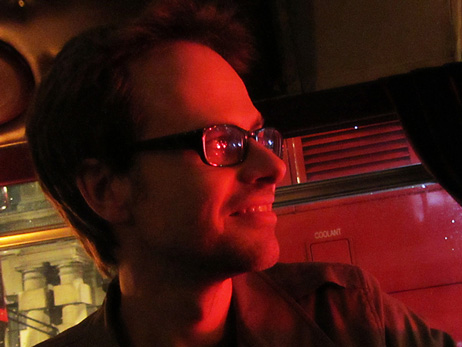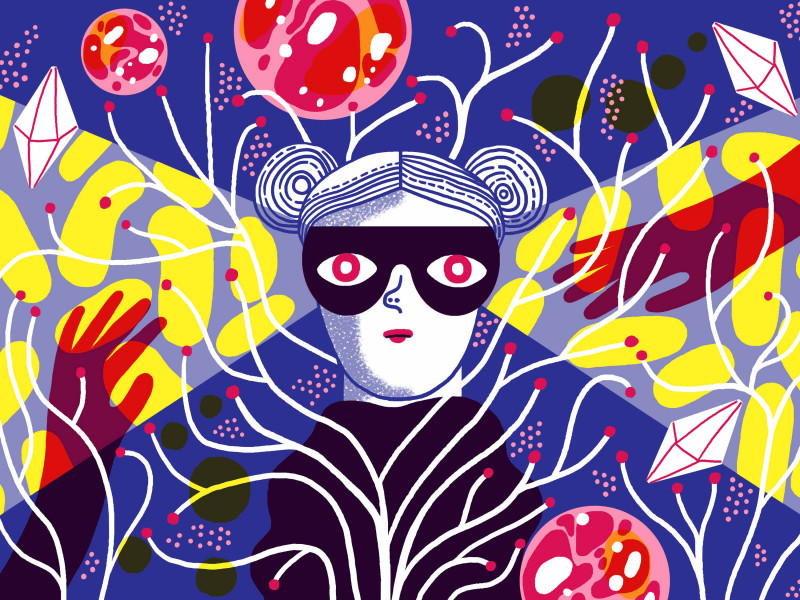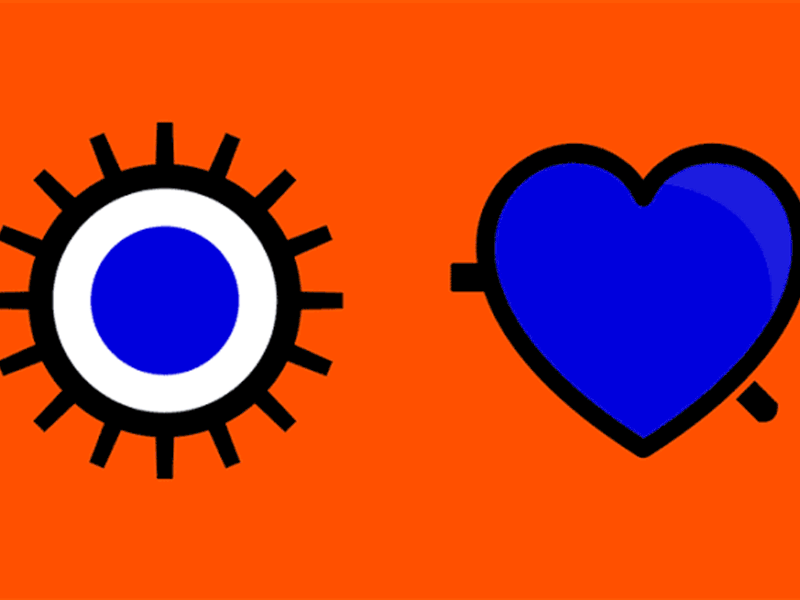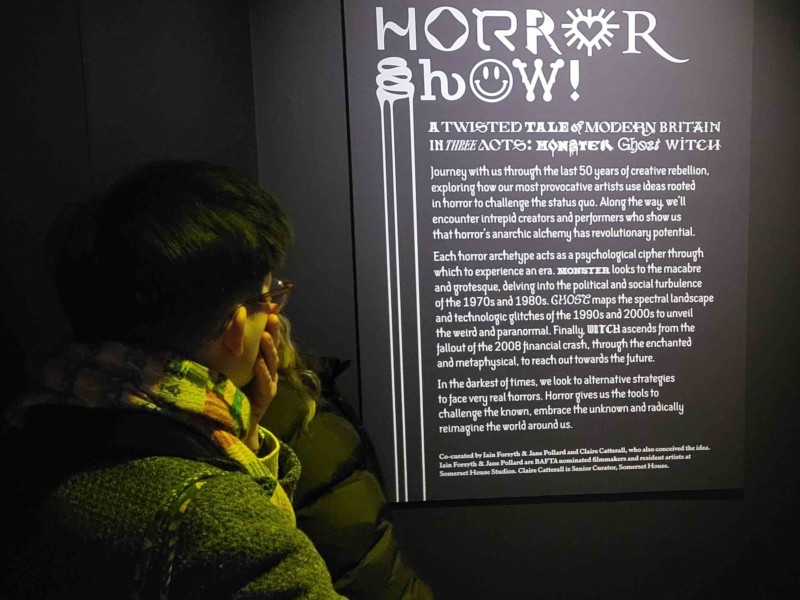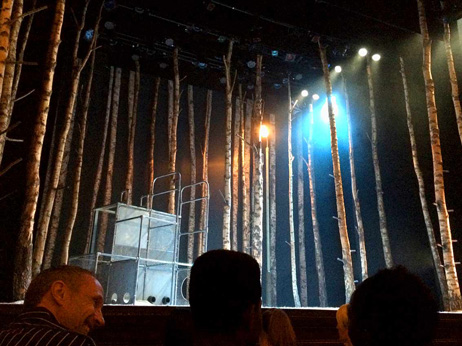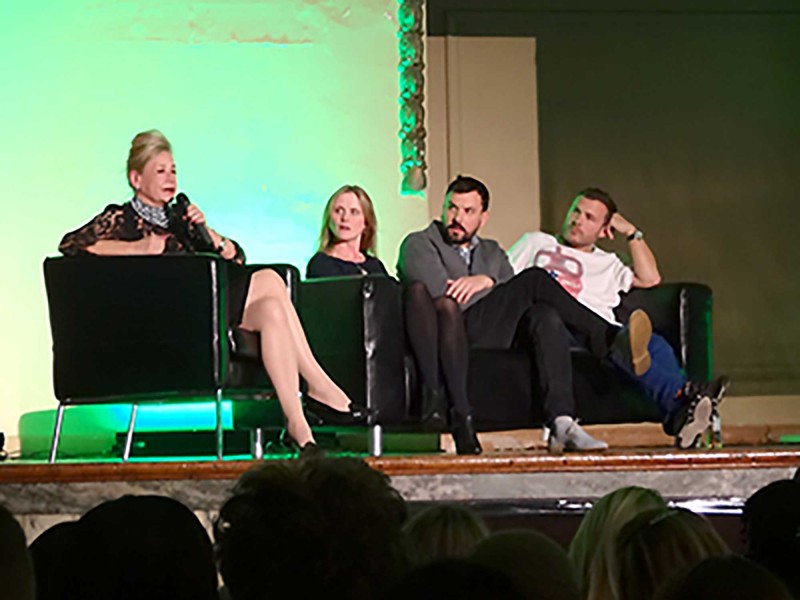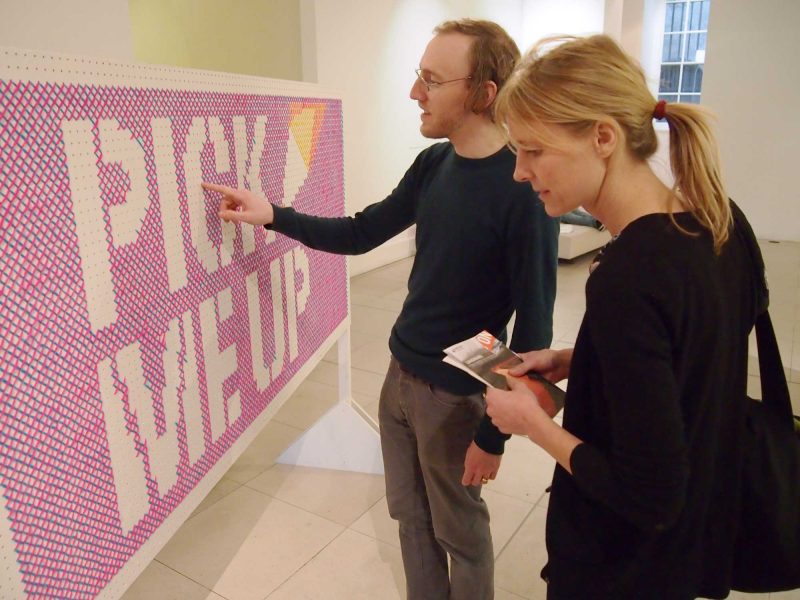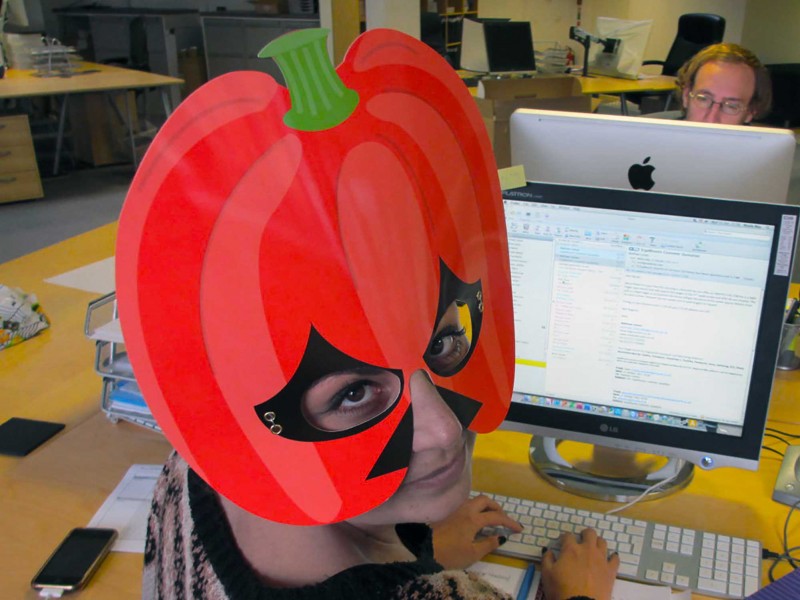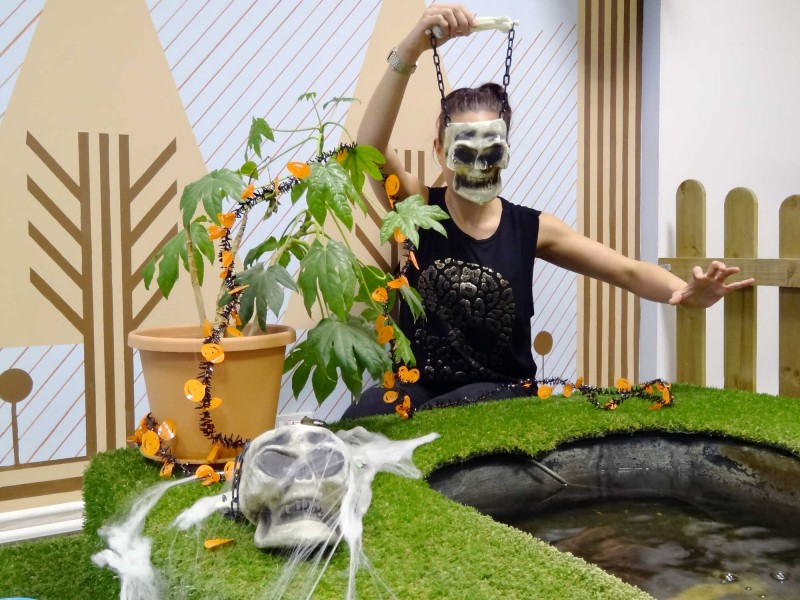Our Cog Night took us to Somerset House for The Horror Show! exhibition. It was a journey into the past 50 years of British culture, a curated collection of artwork and artefacts conjured from the minds of creatives through the lens of the horror genre. Yomi gives us his take.
The Horror Show!
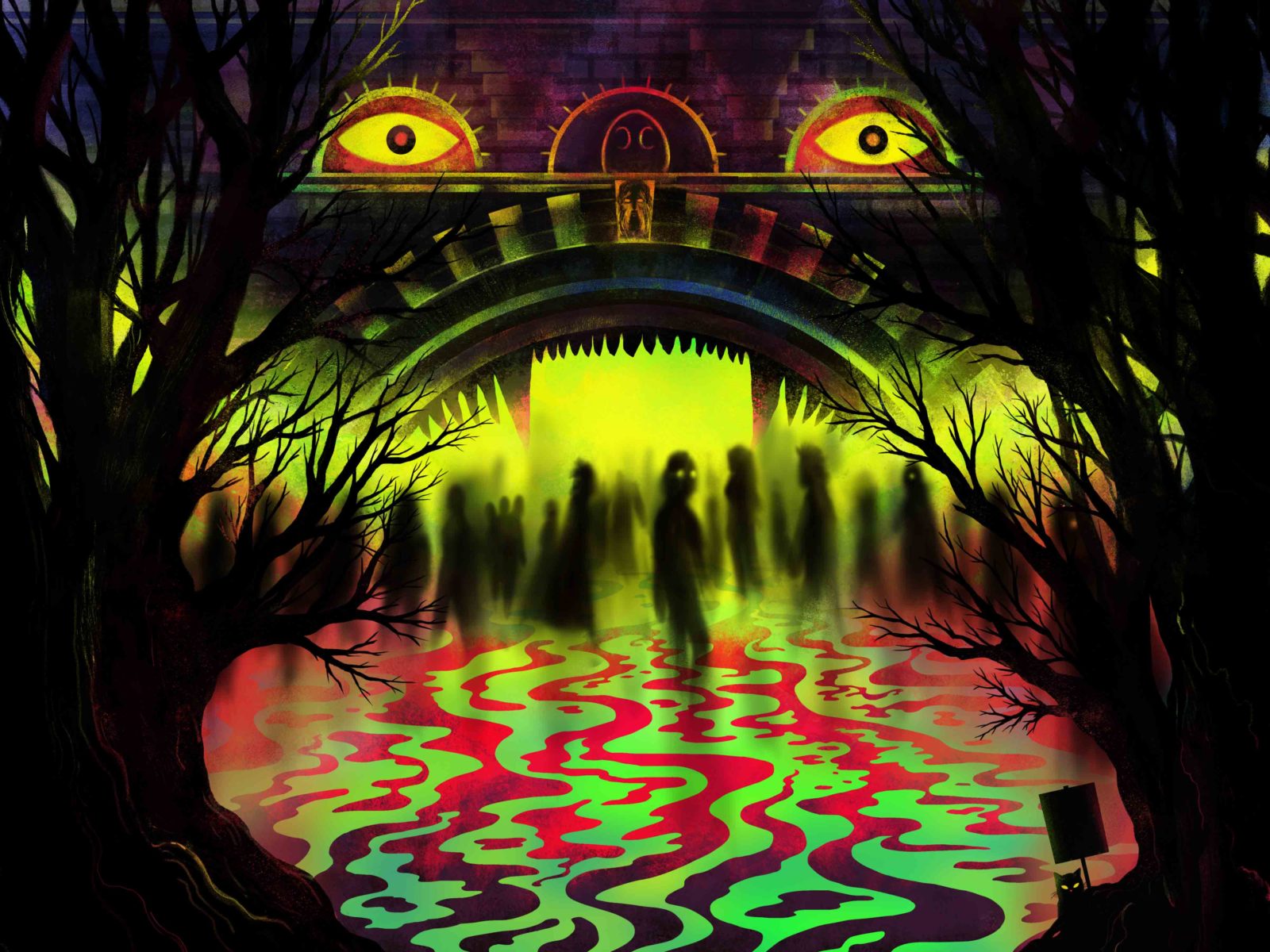
As we make our way through an archway entrance, cleverly made up of a giant set of jagged monstrous teeth, we are directed behind walls by decorative punk-inspired typography (designed by Jonathan Barnbrook). This would be the thematic key throughout the show and help set the tone to our disturbing surroundings.
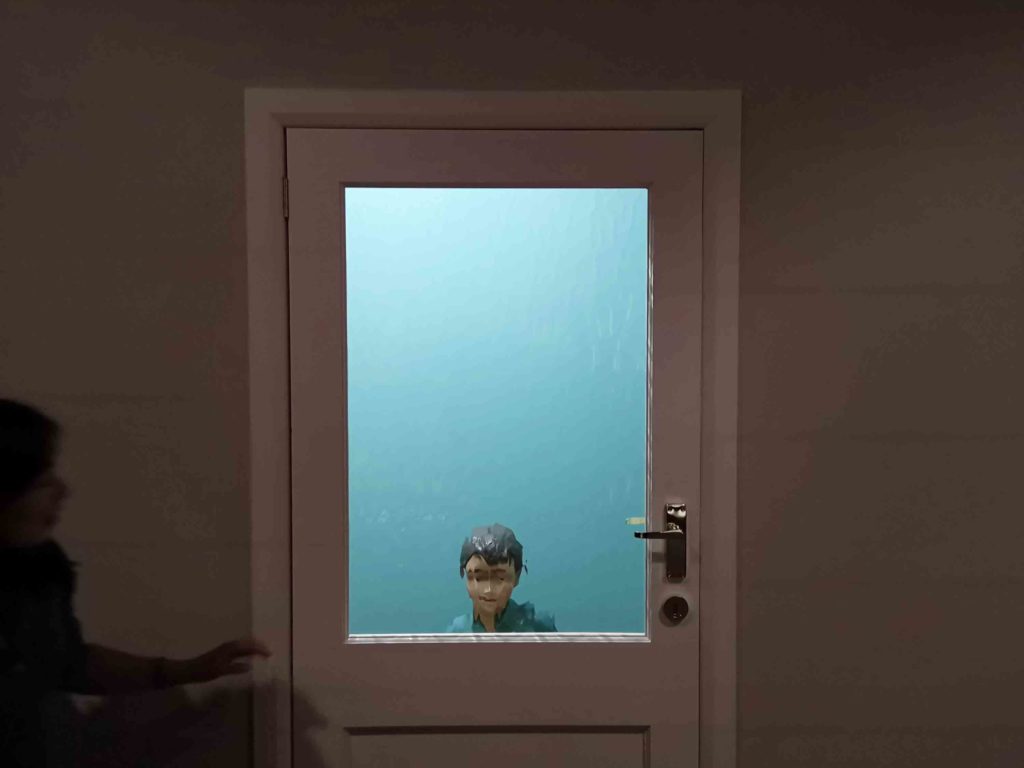
Kerry Stewart’s The Boy from the Chemist Is Here to See You
To help us along this journey, the exhibition would be broken up into three acts – Monster, Ghost and Witch, with each act interpreting the shifting social climate over decades of British history.
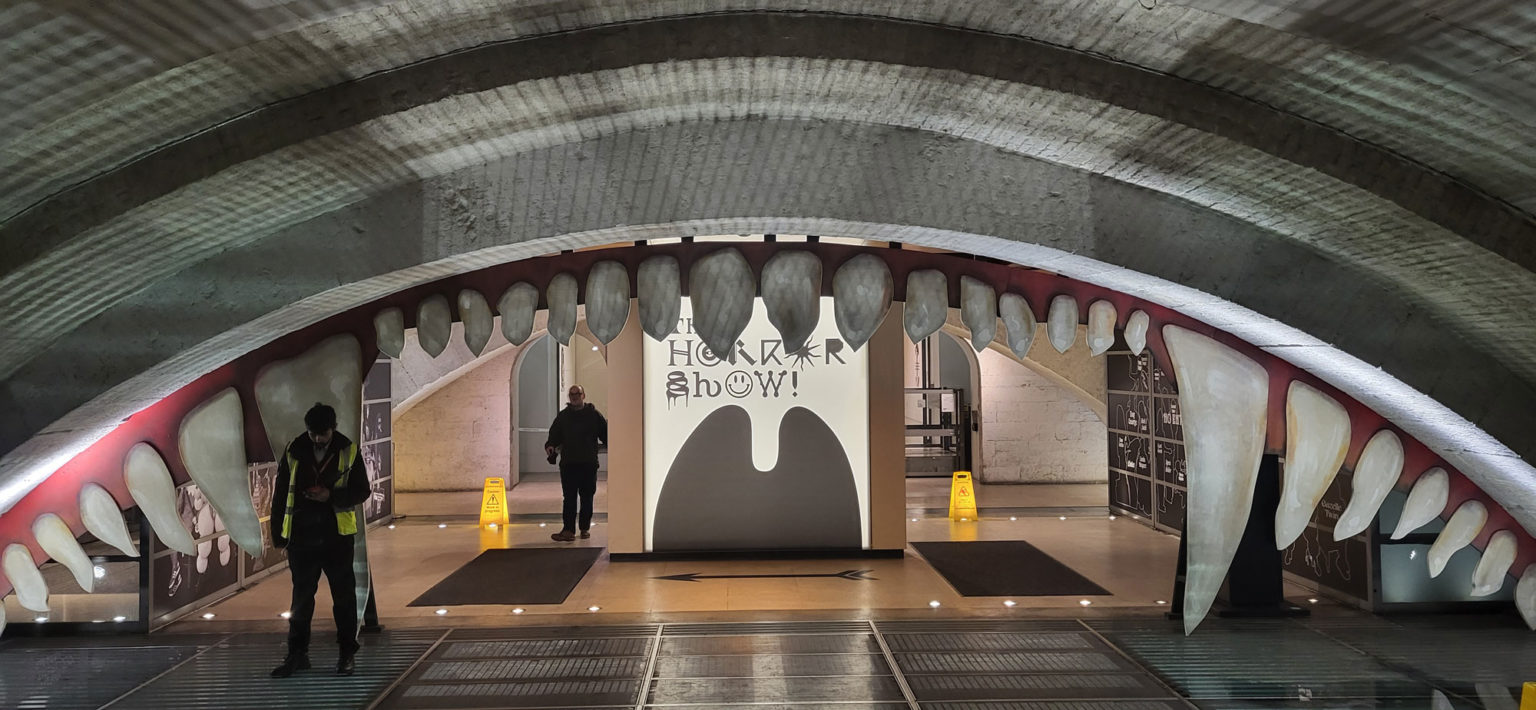
Monster
The first act, Monster begins in the 1970s and here we see a series of cover art and sketches from Stanley Kubrick’s A Clockwork Orange, a perfect example of the social horrors depicted through the power of cinema. The monster theme continues with the disruptive era from which Punk emerged. A fashion centrepiece display of a leather jacket surrounded by more Punk paraphernalia announcing the raging monster of anarchy.
Following on, into post punk we are met with the self-styled monster through the transformative fashion ever present throughout Britain’s nightclubs. Guy Pellaert’s Diamond Dogs, delivers a portrait of the Glam rock icon David Bowie depicted as a hybrid of half man half dog in a freak show.
As we move further into the 1980s, a decade further plagued by turbulent socio-political unrest the monster theme continues. On display is the representation of Margaret Thatcher as the shadowy monstrous figure reigning over British society. Her caricature puppet’s haunting eyes stare back at you through the display glass and plays the centre role of a piece called ‘Misrule Britannia’.
 Diamond Dogs by Guy Pellaert
Diamond Dogs by Guy Pellaert
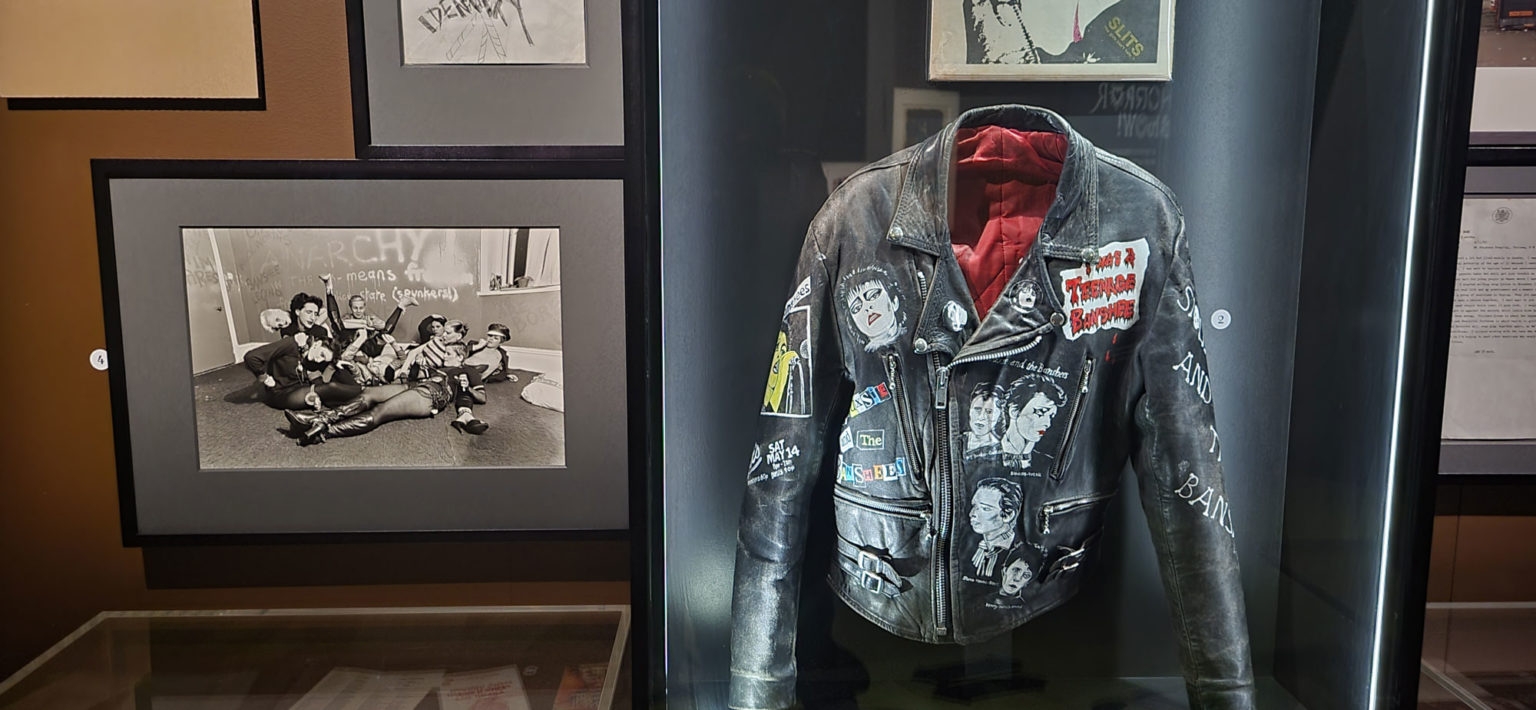 A fashion centrepiece display of a leather jacket
A fashion centrepiece display of a leather jacket
Ghost
Ghost was centred around the decades of the 1990s and 2000s and features a creative collection describing a haunted landscape. Britain was now entering the era that gave birth to the internet and began its early transition into a digital medium.
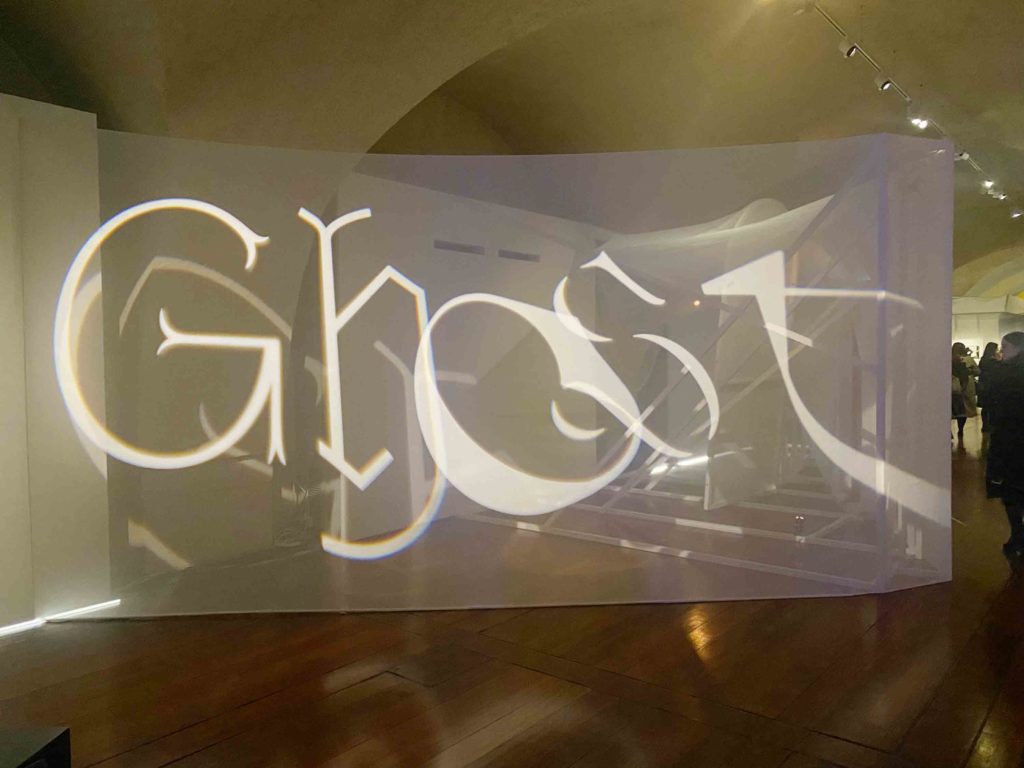
A standout was ‘Self Portrait as a Drowned Man’ an unsettling piece by Jeremy Millar, featuring a life-sized realistic cast of his washed up corpse. Laura Grace Ford’s installation ‘An Undimmed Aura’ contained walls adorned with mono images of neglected housing estates, coupled with eerie soundscape representations of the derelict spaces from a broken social system.
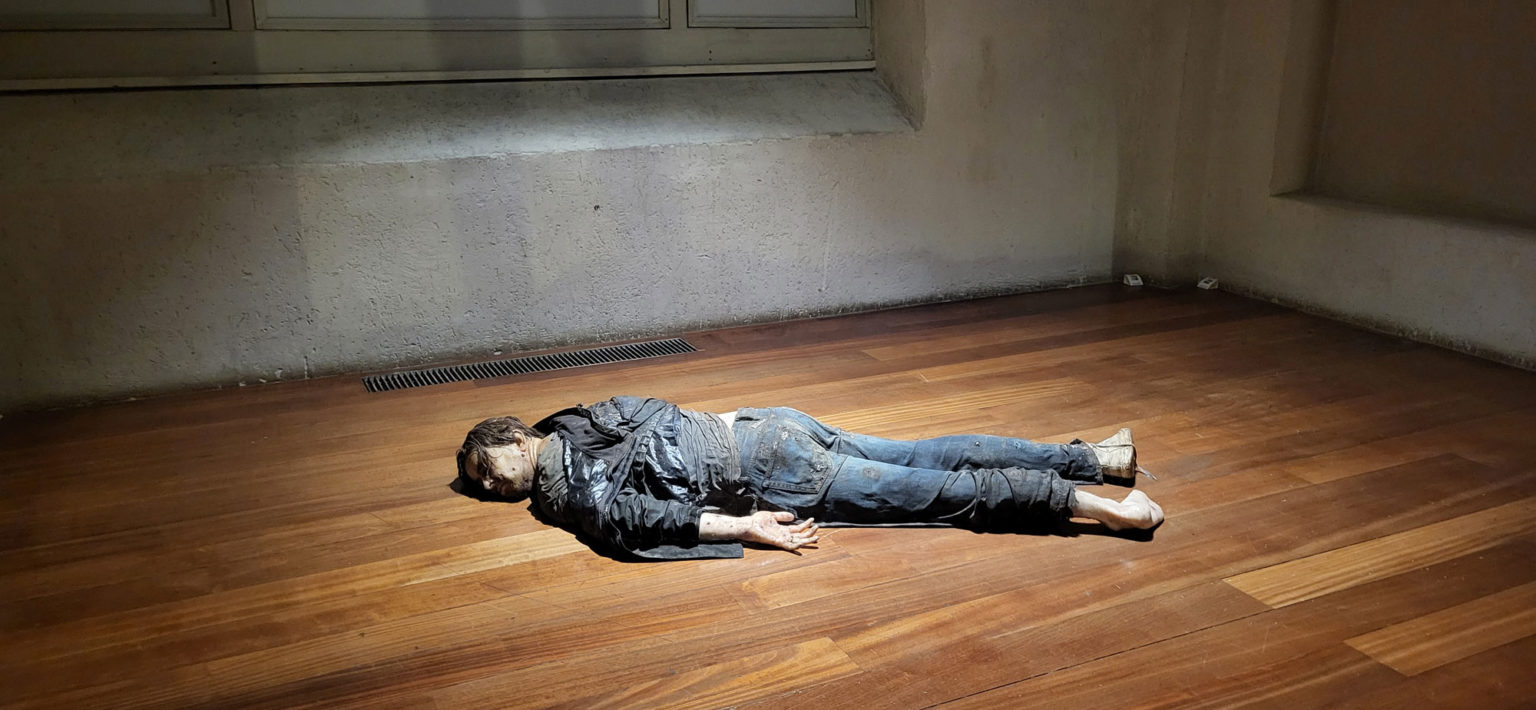 Self Portrait as a Drowned Man by Jeremy Millar
Self Portrait as a Drowned Man by Jeremy Millar
Witch
The final act enters into the new age of opportunity derived from the suffering of the past decades. Artists now turn towards the future beyond and draw upon spiritual and mystical interconnections. These connections stem from technological advancements whilst embracing the horrors of the world and at the same time altering the narrative.
The practice of the occult and witchcraft are also linked to the feminist inspired displays. The exploration of sex and magic through Leanora Carrington’s spellbinding cast bronze statue ‘El Perro’ stands tall as a dominant feature.
There’s also a merging of the exhibition’s primary act, as the fallout from 2007s global financial crisis adds to the rebellious spirit from Monster. The fightback against the power structures of Ackroyd and Harvey’s ‘Truth Coat’ made from growing grass is on centre display, a symbolic item from recent environmental protests.
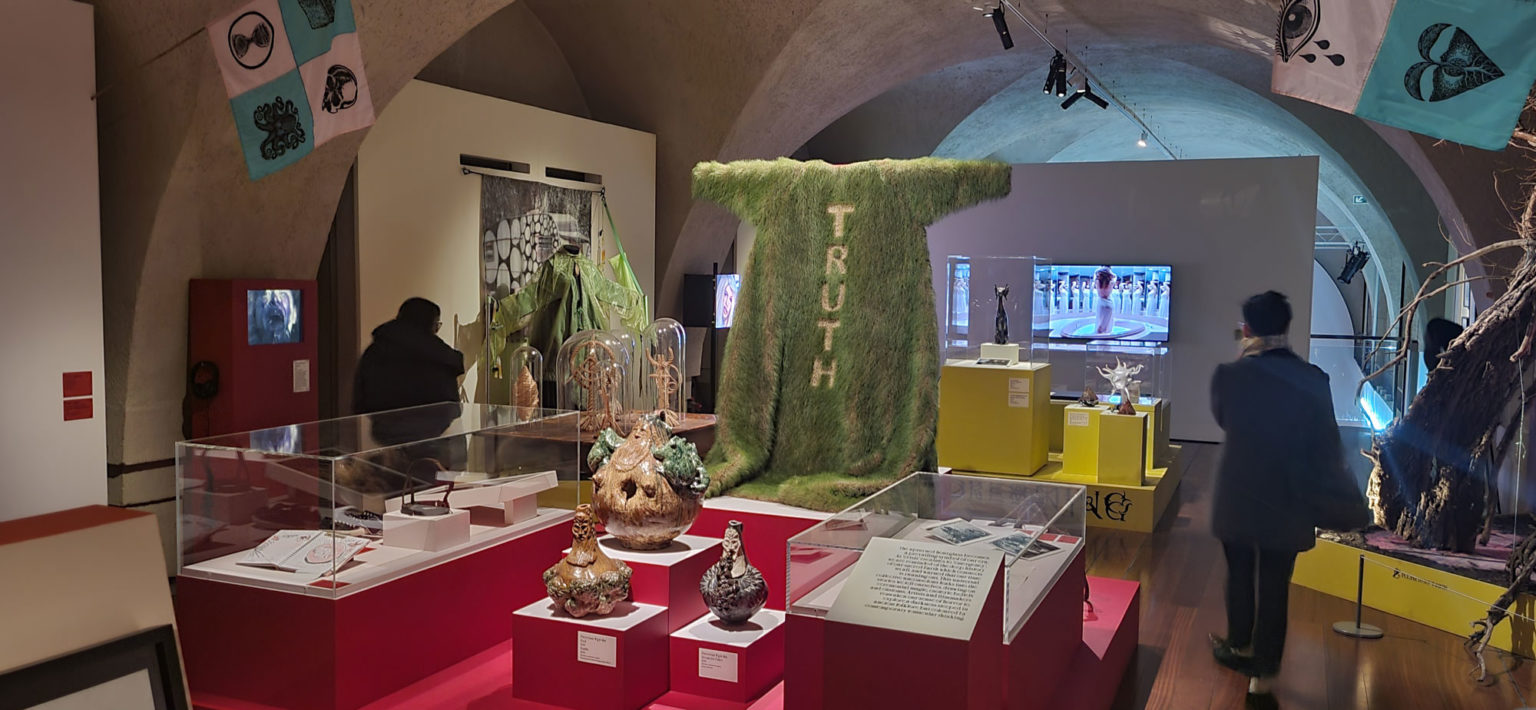
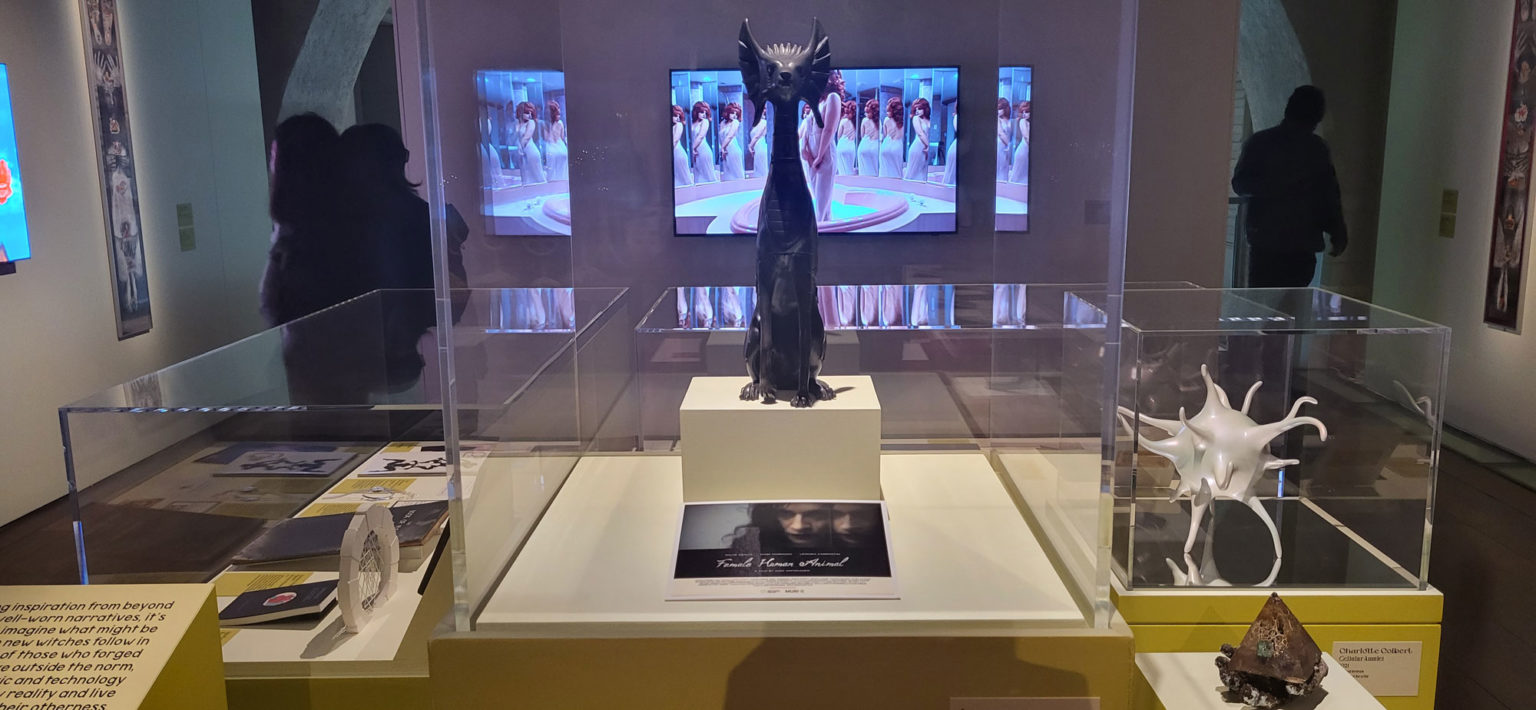 El Perro by Leanora Carrington
El Perro by Leanora Carrington
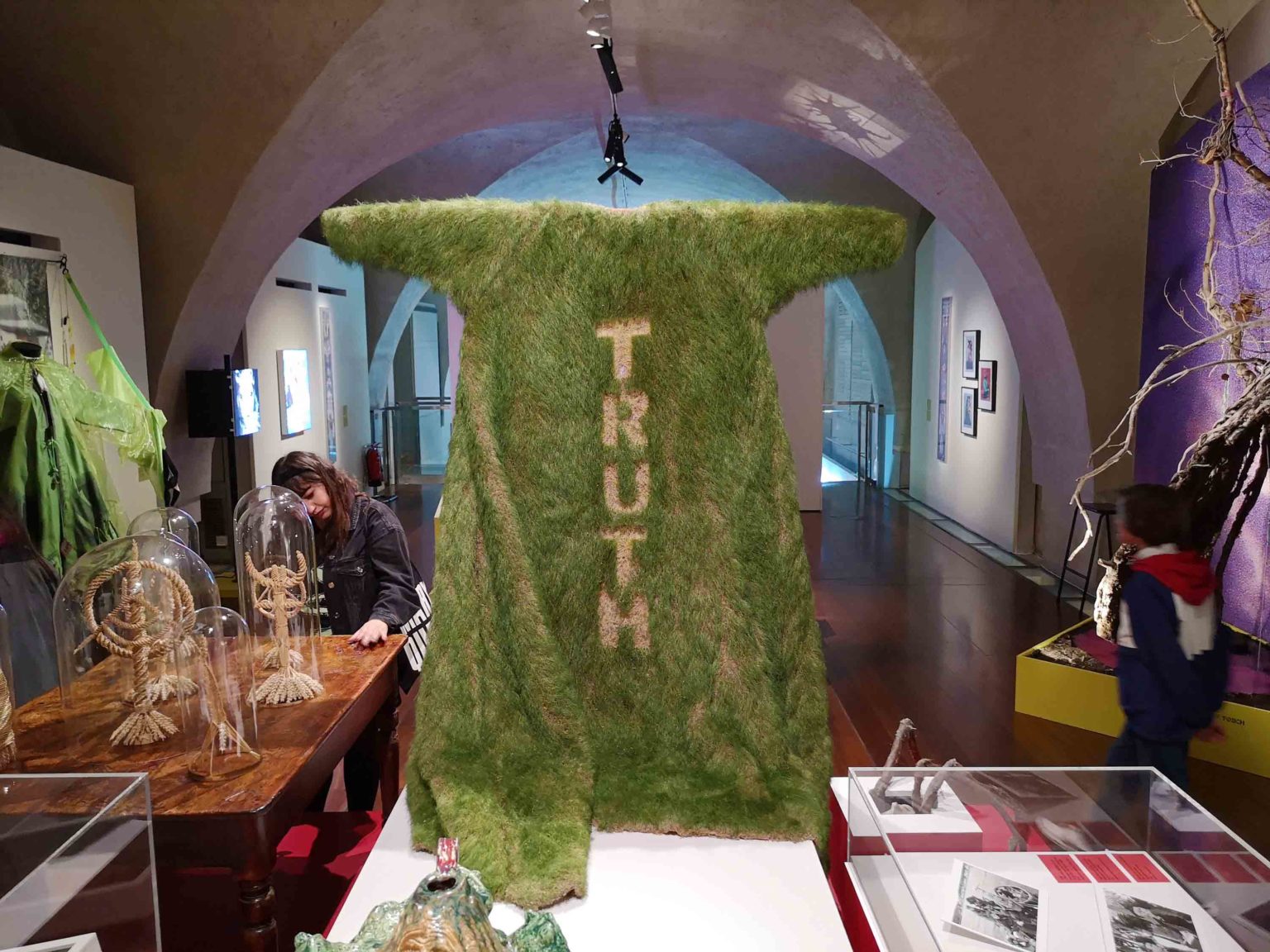 Ackroyd and Harvey’s ‘Truth Coat’ made from growing grass
Ackroyd and Harvey’s ‘Truth Coat’ made from growing grass
Summary
A personal take on the horror genre would lead me straight to the masters like Stephen King, Clive Barker & John Carpenter to name but a few. However none are prevalent in this exhibition, this is horror seen through a socio-political scope.
The heavy influences of horror can clearly be seen through this period of time and the exhibition does its best to highlight a timeframe of the creations stemming from the genre. It is not so much paying homage but is more of an exploration into the darker side of life in Britain.
These artist horrors provide an insight into the fears of what has gone before, our current fears and the fear of what the future holds. At the same time this is also embraced and used for an artistic fightback.
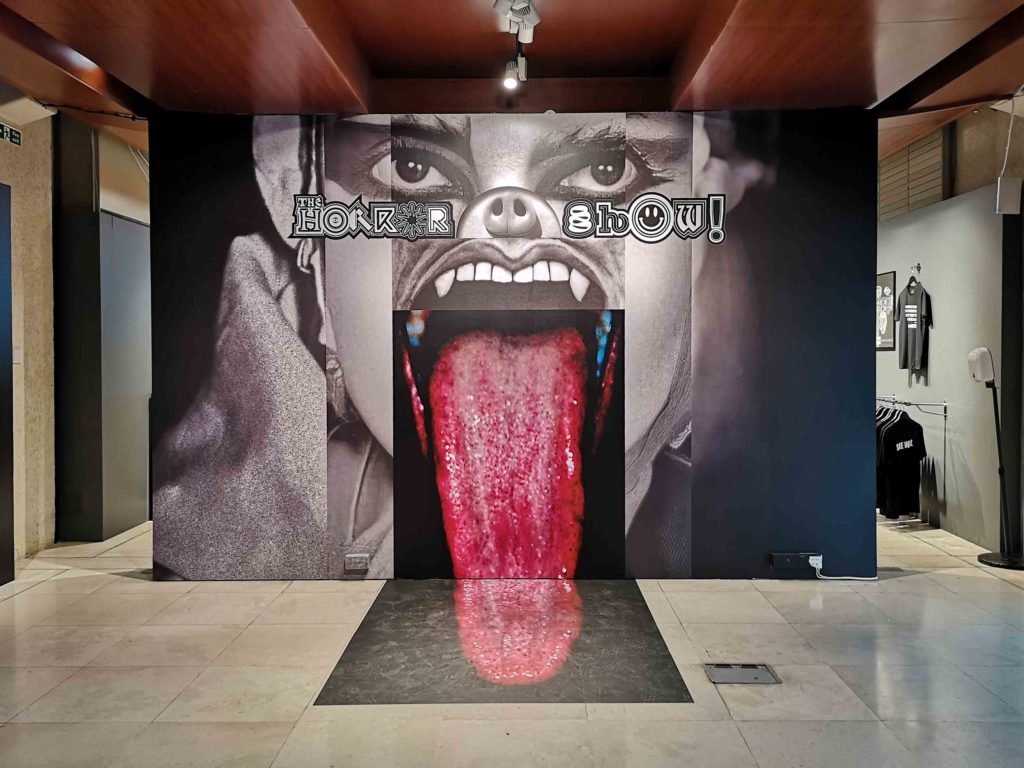
The nightmares of the youth echo with creative expression, unapologetic in its delivery. Here I find similarities with the genre of horror, which also aims to shock and dares to be banned by the established order.
On deeper reflection maybe the show’s interpretation is that we still live in times of turmoil and actual horror as within the past 50 years on show.



